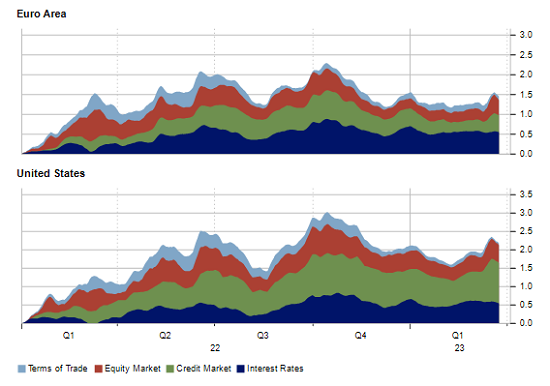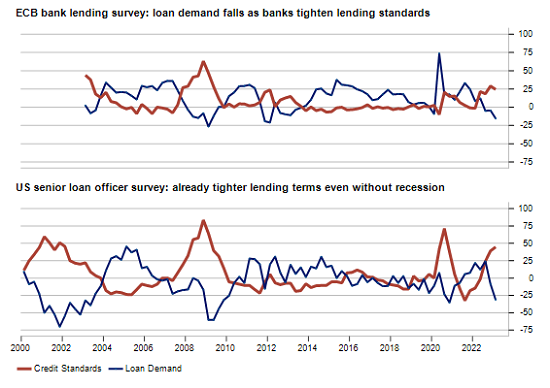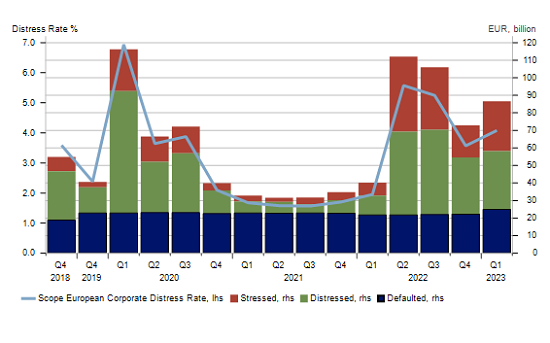Announcements
Drinks

Scope Financial Conditions Index: financial contagion leads to tighter credit in Europe
 By Dierk Brandenburg, head of ESG and credit research
By Dierk Brandenburg, head of ESG and credit research
Scope’s financial conditions indexes for the US and the euro area show that there have been substantial spill-over effects from the recent troubles in financial sector, with the euro area facing tighter conditions again just as the repercussions of last year’s energy shock ease.
Figure 1: Scope Financial Condition indexes show material tightening of credit conditions

Source: Scope Ratings
While the situation is not as bad as at the beginning of Q4 2022, credit markets once again are providing the main impetus for tighter conditions as investors recalibrate their risk after the collapse of Silicon Valley Bank and Credit Suisse’s forced takeover by UBS.
Widening credit spreads mean that central banks are no longer in the driving seat as concerns over credit availability mount. Investors have scaled back short-term rate expectations, with markets now expecting a much-reduced terminal policy rate compared with only a few weeks ago. While the yield curve on government bonds has steepened in response, the curves remain heavily inverted, also signalling lower rates in the longer term. Having said that, much high real interest rates show that the overall policy stance remains tight compared with recent history, which means that the debt burden for leveraged borrowers is already high, even before considering credit spreads.
In view of sticky core price inflation, we expect the monetary policy stance of major central banks to remain tight for the foreseeable future, leaving central banks limited room to stabilise markets as they have done during previous periods of market uncertainty.
Bank lending surveys by the ECB and the Fed show that loan demand is falling and that banks are tightening credit standards. Considering rising funding costs and tighter liquidity, banks are unlikely to change course and expand their lending, even though the economic environment has improved moderately in recent months.
Figure 2: Bank Lending Surveys show that credit availability is falling

Source: Federal Reserve and ECB
Higher credit costs and lower lending activity will lead to rising corporate defaults, albeit with a lag. It is no coincidence that US banks started defaulting only a few months after credit conditions reached their low in Q4 2022. Companies with more fragile balance sheets will have to adjust to higher funding costs and reduced access to bank funding. Scope’s European Corporate Distress rate climbed to 4% in Q1, reflecting a rising amount of euro area corporate bonds that trade at stressed or distressed levels.
Figure 3: More bonds trading at distressed levels

Source: Scope Ratings






